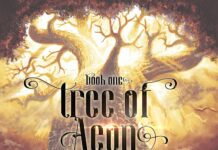In the vast landscape of south Asian literature, few works manage to weave ideology, mythology, and human psychology into a tapestry as compelling as Bano Qudsia’s Raja Gidh. This timeless tale invites readers on a journey through the labyrinth of ethics and existential dilemmas, challenging conventional notions of morality and desire. As we delve into the intricate layers of Qudsia’s narrative, Unraveling the Mysteries of raja Gidh offers a fresh outlook on a story that has captivated generations-prompting reflection on the darker recesses of the human soul and the perennial struggle between virtue and vice.
Exploring the Intricate Symbolism and Themes That Weave Through Raja Gidh’s Timeless Narrative
At the heart of this literary masterpiece lies a profound exploration of human nature, morality, and the consequences of transgression. the narrative employs the metaphor of the vulture-an emblem traditionally associated with death and decay-to symbolize the destructive potential of obsession and forbidden desires. Through its intricate symbolism, the story challenges readers to confront the often-taboo themes of guilt, societal constraints, and the pursuit of knowledge beyond accepted boundaries. The interplay of light and darkness within characters’ journeys underscores the fragile line between sanity and madness, illustrating a timeless dance between virtue and vice.
Moreover, the novel weaves a rich tapestry of themes that echo worldwide struggles. These include:
- The conflict between rationality and passion
- the impact of social stigmas on personal freedom
- The cyclic nature of sin and redemption
- The quest for spiritual enlightenment amid moral ambiguity
To better understand the depth of its philosophical discourse, consider the following thematic contrasts that the narrative artfully presents:
| Theme | Symbolic Depiction | Emotional Impact |
|---|---|---|
| Morality vs.Desire | Human psyche torn between societal rules and primal urges | Inner conflict and turmoil |
| Knowledge vs. Taboo | Forbidden fruit signifies the cost of curiosity | Fear,enlightenment,and consequence |
| Sanity vs. Madness | Fragile mind symbolized by the vulture’s predatory nature | Desperation, despair, and awakening |
A Deep Dive into the Psychological Complexity and Moral Questions Presented in Bano Qudsia’s Masterpiece
Bano Qudsia masterfully explores the labyrinth of human psyche by delving into the darker shades of morality, spirituality, and existential dilemmas. The narrative transcends conventional storytelling, inviting readers to confront uncomfortable questions about the nature of sin, redemption, and the thin line that separates humans from animals. through the allegorical figure of the vulture, the novel unravels themes of forbidden love, societal taboos, and the consequences of pursuing desires without ethical boundaries. It’s an intricate portrayal of the internal battles between conscience and temptation, where characters are not merely archetypes but living embodiments of psychological conflict.
the novel’s moral framework challenges readers to reflect on the following critical dimensions:
- The relativity of justice: How societal norms manipulate concepts of right and wrong.
- Spiritual decay vs. physical corruption: The contrast between inner turmoil and external actions.
- Consequences of transgression: The inevitable psychological and social repercussions of crossing moral boundaries.
| Psychological Aspect | Moral Question |
|---|---|
| Inner conflict between desire and guilt | Is transgression ever justifiable? |
| alienation from self and society | Can societal rejection reshape identity? |
| Spiritual emptiness masked by superficial success | Does material gain compensate for lost morality? |
How Raja Gidh Blends Mythology and Reality to Challenge Conventional Understandings of Human Nature
Bano Qudsia’s masterpiece ingeniously interweaves the mystical world of mythology with the stark realities of human psychology,crafting a narrative that compels readers to rethink established notions about human nature. By using the metaphor of the vulture (“Gidh”), symbolic of decay and destruction, the novel ventures beyond traditional storytelling, exploring themes of moral corruption, spiritual decay, and societal collapse. The blend of the supernatural with everyday human struggles challenges readers to reflect on the thin line separating instinctual impulses from conscious choices, urging an introspective examination of what it means to be truly human.
The novel’s structure delicately balances allegorical elements with tangible, relatable characters whose flaws and desires mirror universal human experiences. Consider this comparative outline of the novel’s thematic layers:
| Mythological Element | Realistic Counterpart | Interpretation |
|---|---|---|
| Vulture as a harbinger of decay | Human greed and moral deterioration | Symbolizes internal rot masked by external civility |
| Supernatural punishments | Psychological consequences of guilt | Highlights the mind’s power in enforcing moral codes |
| Spiritual quests | Search for identity and purpose | Shows the conflict between societal expectations and individual desires |
- Complex symbolism: Myth meets reality, creating multiple layers of meaning.
- Emotional depth: Characters reflect universal vulnerabilities.
- Social critique: Sheds light on the dangers of ignoring moral and ethical decay.
The Role of Forbidden Desires and Societal Taboos Explored Through the Characters of Raja Gidh
At the heart of Bano Qudsia’s narrative lies an exploration of forbidden desires that challenge the rigid boundaries set by society. The characters embody the internal struggle between primal instincts and moral constraints, painting a vivid tapestry of human emotions that transcend time. The tragic fates that befall them serve as a stark reflection of how societal taboos not only repress but also distort natural human impulses. This tension underscores the timeless conflict between individual yearning and collective norms, where crossing invisible lines often leads to profound psychological and social consequences.
The novel masterfully uses its characters as symbols of these taboo explorations, revealing various facets of human nature through their choices and dilemmas. The interplay between these symbolic roles can be summarized as follows:
| Character | Forbidden Desire | Societal Taboo | Outcome |
|---|---|---|---|
| Imam | Yearning for unattainable love | Breaking religious sanctity | Inner torment and isolation |
| Seemi | Transgressive affection | Gender and class boundaries | Societal alienation |
| Bay Gidh | Consuming greed and lust | Moral decay | Destruction and chaos |
- Forbidden desires act as a mirror, reflecting suppressed truths about human nature.
- Societal taboos impose a framework that characters both confront and conform to, fueling the narrative’s tension.
- The interplay between desire and taboo generates a profound commentary on morality,freedom,and fate.
Insightful Analysis of the Story’s Setting and Its Influence on the Novel’s Dark and Enigmatic Mood
Set against the backdrop of an eerie, almost spectral environment, the story’s setting acts as a silent character that breathes life into the novel’s pervasive darkness. The desolate university campus,shadowed by looming moral decay and unspoken fears,mirrors the inner turmoil of the characters. Bano Qudsia masterfully conjures a landscape where everyday reality blurs with the supernatural – a place where the invisible boundaries between sanity and madness seem fragile. This setting not only establishes a haunting tone but also intensifies the ambiguous nature of human desires and psychological conflicts, creating an atmosphere charged with tension and foreboding.
- Fog-laden paths: Symbolize confusion and the unknown, deepening the novel’s enigmatic aura.
- Shadow-filled rooms: Represent hidden secrets and the darkness lurking within souls.
- Cold, unwelcoming environments: Reflect emotional detachment and isolation.
Moreover, the setting skillfully juxtaposes the natural and the unnatural, further enhancing the novel’s mystique. The controlled academic environment contrasts sharply with the primal instincts and forbidden desires that unravel within it. Below is a brief comparison table illustrating how the setting components manipulate readers’ emotions and perceptions throughout the novel:
| Setting Element | Emotional Effect | Mood Contribution |
|---|---|---|
| Dark corridors | Unease and suspense | Heightens mystery and fear |
| Deserted gardens | Loneliness and melancholy | Evokes somber reflection |
| Stormy nights | Chaos and forewarning | Builds tension and unpredictability |
Unpacking the philosophical Undertones That Make raja Gidh a Profound reflection on Life and Death
At its core, this monumental work delves deeply into the blurred boundaries between the metaphysical and the corporeal, challenging readers to question widely accepted notions of morality, justice, and existence itself. Through intricate symbolism and haunting allegory, it unveils the eternal struggle between the spiritual hunger and earthly appetites that define human nature. The author masterfully weaves themes of forbidden desires, societal taboos, and the consequences of transgression into a rich tapestry that reveals how life and death are intricately intertwined, each feeding off the other in an endless cycle of cause and effect.
The philosophical richness of the story is evident in the way it:
- Explores the idea of moral decay versus spiritual ascension.
- Questions the nature of freedom when bound by societal constraints.
- Examines the human condition through the lens of existential hunger and satiation.
- Uses animals, especially vultures, as metaphors for predation, decay, and resurrection.
| Philosophical Theme | Representation in Story |
|---|---|
| Life and death | Cycle of decay and rebirth symbolized by vultures |
| Desire and Morality | Inner conflict exhibited through characters’ forbidden urges |
| Spiritual Hunger | Craving for higher meaning beyond physical existence |
The Narrative techniques That bano Qudsia Employs to Engage Readers in a Thought-Provoking Journey
Bano Qudsia masterfully employs a rich tapestry of narrative techniques that invite readers into a profound exploration of human psyche and morality. her use of symbolism and allegory transcends the boundaries of conventional storytelling, weaving layers of meaning that resonate on both personal and societal levels. through a nonlinear narrative structure, she blurs the lines between reality and metaphysical realms, compelling readers to question the very nature of existence and ethical decay. This technique is enhanced by her insertion of psychological depth, where characters are not just individuals but embodiments of conflicting philosophies and inner turmoil, fostering an intimate connection with the audience.
The author also captivates with her strategic incorporation of multiple perspectives, allowing the narrative to unfold through diverse viewpoints. This kaleidoscopic vision broadens the reader’s understanding, highlighting the complexity of moral dilemmas and the consequences of human actions. Dialogue-driven scenes and introspective monologues punctuate the plot, encouraging active engagement and reflection. Consider the following table summarizing these key techniques and their effects:
| Narrative Technique | Effect on Reader |
|---|---|
| Symbolism & Allegory | Encourages deeper philosophical interpretation |
| Nonlinear Narrative | Creates suspense and challenges perceptions of time |
| Multiple Perspectives | Broadens understanding of complex themes |
| Psychological Depth | Fosters empathy and personal introspection |
- Rich character growth that mirrors existential struggles
- Philosophical undertones questioning moral absolutes
- Intertextual references that enrich the narrative’s intellectual depth
Relevance of Raja Gidh in Contemporary Society and Why Its Messages Remain Urgently Critically important Today
at its core, the narrative transcends time, echoing the eternal struggle between ethical boundaries and the human impulses that threaten to dismantle them.The complex characters and their moral dilemmas mirror contemporary conflicts where desires outpace reason, often leading to societal decay. In an age marked by rapid technological progress and shifting cultural norms, the novel’s exploration of spiritual corruption and the consequences of forbidden pursuits resonates more than ever. The story’s vivid allegories serve as a warning against unchecked ambition and illustrate how the erosion of integrity in small, personal realms can ripple outward to affect collective harmony.
- Human psyche’s fragile balance: Understanding the thin line between morality and chaos.
- Modern ethical conundrums: Navigating complexities in a world driven by instant gratification.
- Societal impact of personal choices: How individual transgressions shape the collective fate.
Moreover,the novel’s timeless messages invite readers to reflect on their own lives and choices in a societal framework flooded with ambiguity and moral relativism. its cautionary tale not only underscores the repercussions of forsaking humanity’s innate values but also champions the pursuit of self-awareness and compassion as antidotes to disintegration. In this way, the story remains an indispensable lens through wich modern society can examine enduring questions about meaning, power, and the cost of forsaking ethical anchors in a chaotic world.
| Contemporary Issue | Reflection in the Novel | Urgent Takeaway |
|---|---|---|
| Materialism & Excess | Desire leading to spiritual bankruptcy | Balance ambition with ethical grounding |
| social Fragmentation | Decay of relationships through selfish choices | Value empathy and communal ties |
| Identity Crisis | Search for meaning beyond superficial success | Prioritize self-reflection and authenticity |
Practical Recommendations on how to Approach Reading Raja Gidh for Maximum Emotional and Intellectual Impact
To truly immerse yourself in raja Gidh, approach the narrative with an open mind, ready to delve into layers of moral complexities and human psychology.Take your time with the text-this is not a story to rush through. Allow the symbolism, especially the metaphor of the vulture, to resonate on both a conscious and subconscious level. Considering reading in quiet settings, perhaps alongside a journal for capturing spontaneous insights or questions that arise during pivotal moments. Engage actively with the language: pause at philosophical dialogues and ask yourself how these reflections mirror societal norms or personal beliefs. This contemplative pace transforms reading into a meditative process,enriching both emotional and intellectual connections.
Enhancing your understanding is easier when you approach the novel with an intent to explore its multifaceted themes.Sharpen your focus on character dynamics by highlighting key passages and observing how despair, ambition, and forbidden desires interlace. To aid in comprehension and discussion, keep these strategies in mind:
- Identify recurring symbols such as the motifs of vultures, dreams, and societal taboos.
- Map character trajectories in a simple chart to visualize their psychological changes.
- Pause after each chapter for reflection or even discussion with fellow readers.
- Integrate past context by researching cultural elements relevant to the story’s setting.
| Element | Purpose | Suggested Approach |
|---|---|---|
| Symbolism | To reveal hidden meanings and societal critique | Note symbols during reading and interpret in broader context |
| Character Development | To illustrate human psychology and moral conflicts | Track emotional shifts with a reflective journal |
| Philosophical Dialogues | To engage with ethical and existential questions | Read slowly and ponder the implications |
comparing Raja Gidh to Other Works of South Asian literature to Understand Its Unique Literary Value
When examining Bano Qudsia’s masterpiece alongside the rich tapestry of South Asian literature, Raja Gidh emerges as a work that profoundly intertwines metaphysical themes with societal critique-a distinction that sets it apart from contemporaries. While novels like Saadat Hasan Manto’s Toba Tek singh or Ismat Chughtai’s Lihaaf offer sharp reflections on partition and gender, Raja Gidh dives deeper into the moral decay of humanity using allegory and symbolism rooted in Islamic philosophy. It eschews mere social commentary,instead exploring the haunting consequences of forbidden desires and existential despair,allowing readers a unique blend of intellectual rigor and emotional resonance rarely paralleled in regional narratives.
To further illustrate its uniqueness,consider the following comparative insights:
- Philosophical layering: Few South Asian novels embed spiritual and metaphysical dilemmas as centrally as Raja Gidh,which uses the metaphor of vultures to question ethical boundaries.
- emotional complexity: Its characters frequently confront internal conflicts at the intersection of faith, desire, and sanity, enriching the narrative beyond conventional plotlines.
- Linguistic style: Qudsia’s prose merges classical Urdu literary tradition with modern existential themes, crafting an accessible yet profound linguistic experience.
| Aspect | Raja Gidh | Other South Asian Works |
|---|---|---|
| Central Theme | Moral decay and metaphysics | Social issues and identity |
| Narrative Style | Allegorical and philosophical | Realistic and often autobiographical |
| Symbolism | Extensive use (vultures, metaphors) | Contextual and political |
| Emotional Focus | Philosophical introspection | Societal alienation & trauma |
Why Raja Gidh Appeals to Both New Readers and Literary Scholars with Its Multilayered storytelling
Bano Qudsia’s storytelling transcends the boundaries of conventional narratives by weaving together complex themes that resonate universally.At its core, the novel explores the intricate dance between morality, obsession, and the metaphysical, inviting readers to delve deeper than surface-level interpretations. For newcomers,the compelling characters and evocative symbolism provide an engaging gateway into an unforgettable world rooted in cultural and philosophical richness. Meanwhile, literary scholars find themselves immersed in layers of allegory and intertextuality – a fertile ground for critical analysis and discourse on human nature and existential dilemmas.
The novel’s multifaceted nature is further reflected in its structural composition, crafting an experience that is as intellectually stimulating as it is emotionally gripping. This dual appeal can be broken down into key elements that make the story a timeless classic:
- Philosophical Depth: Engages with questions of life, death, and the afterlife.
- Symbolism: rich use of animal imagery, especially the vulture, to represent forbidden desires and decadence.
- Psychological Exploration: Characters embody conflicting human instincts and ethical struggles.
- Social Commentary: Reflects on societal norms and taboos embedded within cultural contexts.
| Appeal to New Readers | Appeal to Literary Scholars |
|---|---|
| engaging and emotive storytelling | Complex narrative layers for critical study |
| Relatable human emotions and dilemmas | Intertextual references and allegories |
| Vivid and memorable characters | Rich symbolism backed by cultural philosophy |
| Accessible prose with deep thematic core | Textual nuances prompting academic discussions |
The Enduring Legacy of Raja Gidh as a Cultural and Literary Touchstone in Urdu Literature
Bano Qudsia’s masterpiece has transcended time to become more than just a novel; it is indeed a profound mirror reflecting the complexities of human nature and society through its allegorical narrative. Rooted deeply in the philosophical and cultural fabric of Urdu literature, this work has sparked scholarly discussions and inspired countless readers by exploring themes of forbidden desires, spiritual decay, and the consequences of moral degeneration. Its rich symbolism and haunting imagery have cemented its place as a quintessential reference point for understanding the existential struggles prevalent in South Asian culture.
Beyond its literary brilliance,the novel serves as a cultural touchstone that continues to resonate with evolving generations. It has been a source of inspiration across various media, including theater, television, and academic research. Its legacy thrives through:
- Philosophical depth connecting Eastern mysticism with contemporary moral questions.
- Psychological insight into human desires and the conflict between conscience and ambition.
- Cross-generational appeal bridging traditional Urdu literature with modern storytelling.
| Aspect | Legacy Impact |
|---|---|
| Literary Influence | Inspired new wave of allegorical storytelling |
| cultural Relevance | Explores societal taboos and moral dilemmas |
| Media Adaptations | Adapted into plays and TV dramas |
| Academic Studies | Featured in research on Urdu socio-philosophical literature |
A Closer Look at Bano Qudsia’s Life,Writing Philosophy,and Influence on Pakistani Literature and Beyond
Bano Qudsia,a literary titan of Pakistan,carved an indelible niche through her profound exploration of human psychology,spirituality,and societal norms. Her writing philosophy was deeply rooted in the belief that literature should not only entertain but provoke thought and foster introspection.Drawing from Sufi mysticism, existential dilemmas, and raw emotional landscapes, she created characters that lived beyond the page-flawed, vulnerable, and deeply human. This approach not only enriched Urdu literature but also bridged cultural and philosophical divides, allowing readers from diverse backgrounds to connect with her narratives on a transcendent level.
Her influence stretches far beyond the borders of Pakistan,inspiring generations of writers to engage with themes of morality,metaphysical inquiry,and social justice. The transformative impact of her work can be summarized in the table below, highlighting key aspects of her legacy:
| Aspect | Impact on Literature | Broader Cultural Meaning |
|---|---|---|
| Character Depth | Introduced complex protagonists embodying ethical conflicts | Encouraged empathy and self-reflection among readers |
| Thematic Boldness | Addressed taboo topics with sensitivity and courage | Expanded boundaries of discourse in conservative societies |
| Sufi Elements | Incorporated mysticism seamlessly into narrative | Revitalized interest in spiritual philosophy across audiences |
| Legacy | mentored upcoming writers, fostering literary communities | Influenced theatre, television, and academic discourse internationally |
- Emphasis on psychological realism: transforming characters into vessels of universal human experiences.
- Promotion of female perspectives: advocating for women’s voices in a traditionally patriarchal literary scene.
- Integration of societal critique: weaving subtle yet powerful commentaries on cultural and political issues.
In peeling back the layers of Raja Gidh, Bano Qudsia offers readers more than just a story; she presents a profound exploration of human nature and the ethereal boundaries between morality and desire. This timeless tale invites reflection long after the last page is turned, reminding us that some mysteries are not meant to be solved, but rather lived and felt. Whether you approach it as a literary journey or a philosophical inquiry, Unraveling the Mysteries of Raja Gidh proves to be a compelling companion in understanding the complexities that lie within us all.










